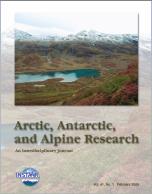In a recent paper in this journal, Moen and Lagerström (2008) reported a study on changes in plant species richness in alpine summit areas in the Swedish Scandes. Historical data on species numbers around 1950 (Kilander, 1955) were compared with counts performed in 2002 at the same locations.
The main finding was a net decline in species richness and a high species turnover, which were attributed to increased reindeer trampling. There are potential complications concerning the interpretations of this study, as it fails to consider previously published and conflicting reports.
Well in advance of the acceptance date of the concerned study, I had published papers (Kullman 2006a, 2006b, 2007a) with the same basic methodology and performed on two of the mountain summits investigated by Moen and Lagerström (2008). The only difference was that my study was carried out two years later, i.e. in 2004. In great contrast to the results reported by Moen and Lagerström, it was shown that species richness had increased substantially (58 and 67%) without any loss of the initial species pool. The alpine flora had become richer, possibly in response to climate warming, and despite quite intensive reindeer grazing and trampling. In a later paper, this trend has been further substantiated by analogous studies on other high mountains in the same area (Kullman 2007b).
It seems highly unlikely that there could be such discrepancy in species numbers over such a short period of time (i.e. 2 years). One possible explanation for the difference between my results and those of Moen and Lagerström (2008) may be that their study was carried out at a too early stage of the season (3–15 July), prior to the emergence of many species. Several of the “summit invaders” disclosed by Kullman (2007a), were “forest species,” which require a longer growing season prior to emergence.





